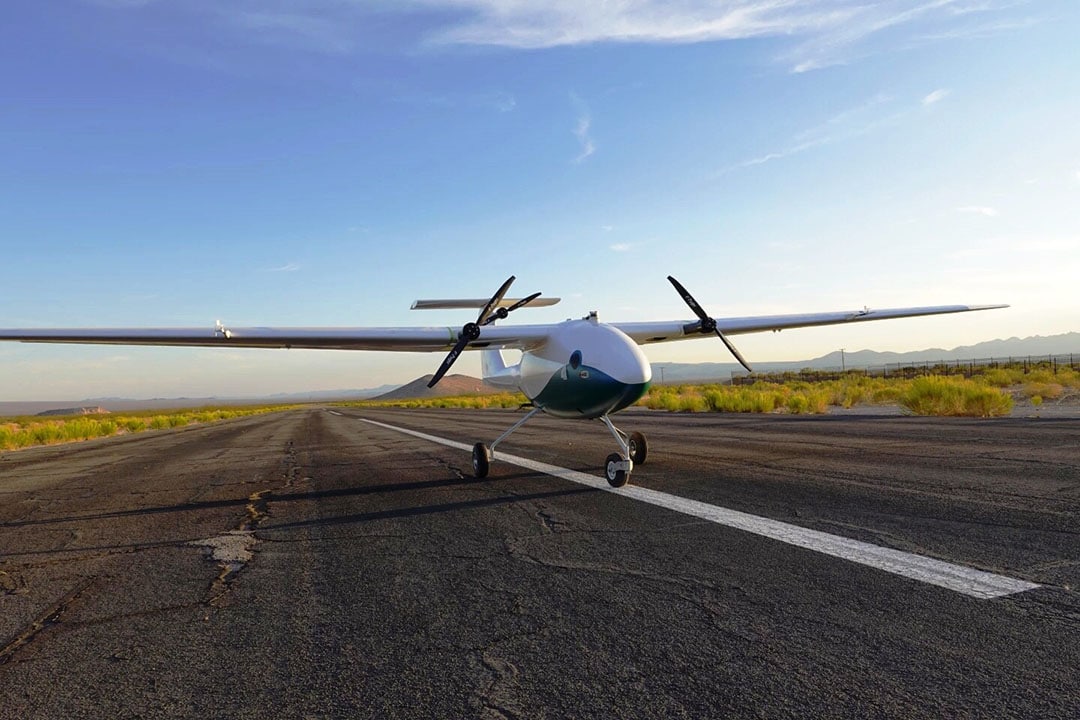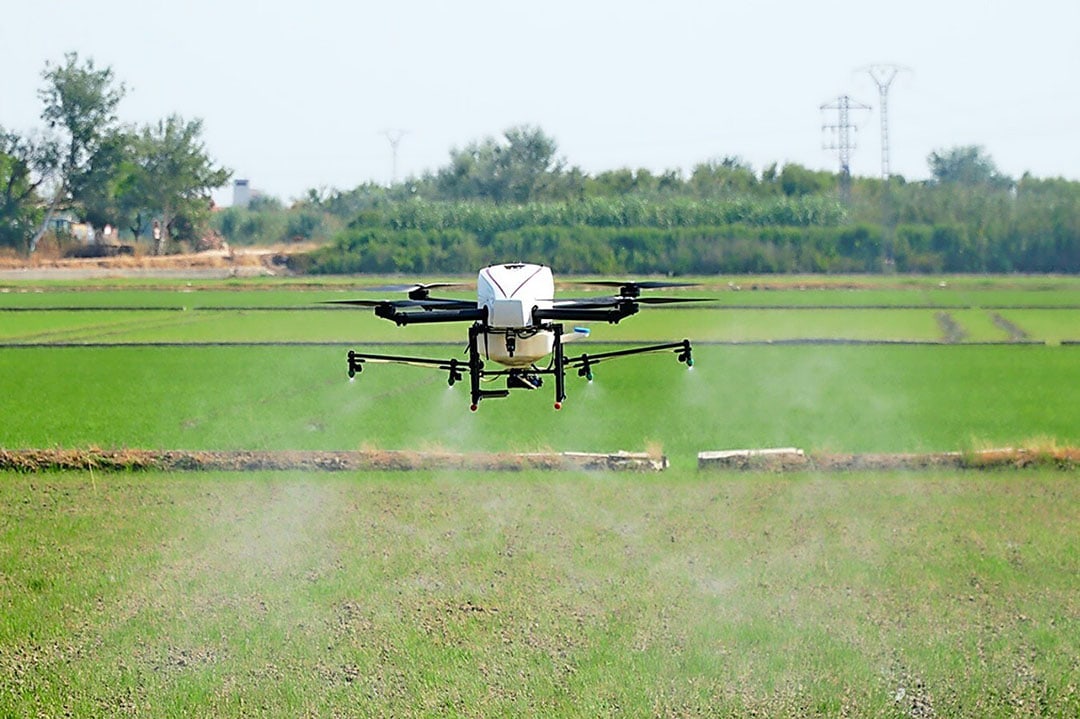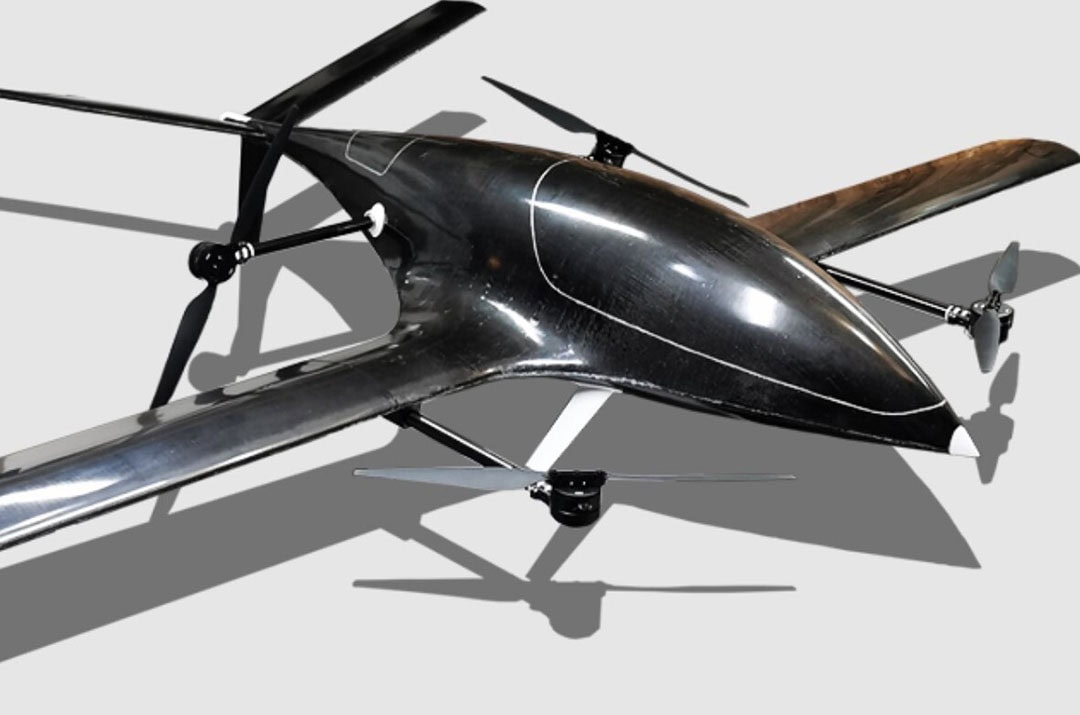What technology can halt the unstoppable rise of the drones?

It’s hardly surprising that after crop scanning with a drone and creating a precise application map that operators will then use it to also apply the treatment. But although drones are convenient and accessible technology, are there even better alternatives? We look at what could be flying and what it might be applying in the future.
At first glance it’s hard to imagine what could challenge the apparently unstoppable rise of the drone. What are the alternatives? The dominance of drones is driving their deployment in agriculture, says Fred Miller, the inventor of the HayBeeSee Crophopper jumping robot.
Compromises
He explains that many of the developments are compromises made to adapt what’s currently available to suit farming’s needs, rather than something that is specifically designed for the job. His answer is a jumping robot, designed to operate truly autonomously. It hops across fields, identifying weeds and diseases as well as carry out mechanical weeding or spot spraying.
The design makes it efficient by using a carbon-fibre jumping leg that propels it into the air. At about half-way into the jump four propellers engage to increase the travel distance and soften the landing. Unlike a drone, which needs a battery change every 20-30 mins, it can cover about 70 ha/day on three battery changes. It doesn’t require a pilot and, importantly for EU operations, can apply spot sprays – because it lands and so this is not an ‘aerial’ application.
Is it a bird..?
A drone that mimics bird flight, is how Patrick Maletz, founder of Falco Drone Technology describes the Hover Bird. “Conventional drones and helicopters use 95-98% of their energy to just stay in the air and overcome gravity, which means drone batteries often don’t keep them airborne for longer than 20 min. And they’re also not very good at flying in high winds,” he adds.
“We’ve worked out that by using wind like a bird does, rather than fighting against it, we can increase flight time to about three hours.” While, as yet, there are no pictures and very little further information, Patrick does say that the new design can hover easily and is ideally suited to scanning crops and swooping down for closer views.
Text continues underneath image

Fixed wing future
Although fixed wing UAVs are proving popular for scanning and crop scouting, they have yet to take off with spraying systems attached. There are, however, a number of exciting developments, although information on these is scarce.
Pyka, an autonomous electric aircraft manufacturer, based in California, USA, advertises ‘the world’s most productive sprayer drone’. It is more like a mini-crop duster aeroplane and its latest ‘Pelican’ model has been granted a Federal Aviation Administration airworthy certificate. With its 283 kg payload, it’s clearly aimed at broad-acre farming, providing a safer alternative to manned aircraft, with the advantage of autonomous operation. It can cover up to 55 ha/hr at a spray rate of 7.6 l/ha.
With a 11.6 m wingspan it measures 6 m long and is driven by three rotors – one on each wing and the tail – at speeds up to 145 km/hr. Power is provided by redundant lithium polymer battery packs, said to provide 1,000 cycles of operation.
On a much smaller scale is the U7AG, developed in Canada by Forward Robotics. Built using carbon-fibre panels and 3D printed components, it is made completely in-house, including the software. It has a 2.5 m wingspan and has four rotors that provide propulsion as well as vertical take off and landing (VOTL). It is designed to cover about 40 ha/hr at 44 litres/ha. Key to its high level of productivity, says the maker, is its fast spraying speed and autonomous operation, which includes take off, landing and automated refilling.
Text continues underneath image

Hybrid systems
When it comes to drones the term hybrid is used in two ways. Firstly it can describe a combination of wings and rotors to provide VOTL operations or short take-offs, such as that on the U7AG. It can also mean a combination of electric and petrol engine power. One example is the Hybrix 2.1 built by Spanish manufacturer, Quaternium, which has received funding from the EU Horizon 2020 research and innovation programme.
This four-rotor drone is still in the 25 kg weight category, with a 10 kg load, but offers flight times of up to two hours with a maximum payload. The spraying version employs eight nozzles, fitted in pairs on a boom. An advantage of the two-stroke engine is that there is no need to charge batteries, but it obviously needs to land for refills of spray liquid and petrol.
Twin rotor UAV
Most drones used in farming are equipped with four, six or eight rotors. But this could change soon when XAG introduces its first bi-coptor, called Polar V40 2021, which was originally previewed in December 2020. Why just two rotors? XAG explains that this improves flying efficiency and, thanks to its smaller dimensions, will be able to squeeze into tighter spaces – in between crop rows, for example.
Text continues underneath image

Big green drones?
John Deere attracted a huge amount of attention at the 2019 Agritechnica show, in Hannover, with it’s 9.2m VoloCopter and it’s ‘nest’ of drones with fully autonomous operation. So far there’s been no further information. The idea is that the drone is housed in its own ‘hanger’ out in the field and operations are remotely controlled by the operator. A lid on the hanger opens and the drone slides out onto a take-off pad, scans the field and returns to the hanger. The operator then creates an application map and selects the product, which is loaded and refilled automatically inside the nest. Batteries are also changed automatically.
Large drone collaboration
With US$ 10.5 million financing and the backing of some of the world’s largest agribusinesses, Guardian Agriculture is aiming to ‘modernise crop protection with eVTOL-powered precision.’ Key partners include Bayer, Wilbur-Ellis, FMC and Fall Line Capital. A new, eVOL drone, with a ‘multi-hundred pound payload’ will be responsible for the applications.
There are currently scant details about this drone. Pictures on the website show that it is considerably larger than any current spray drones and is housed, folded in a purpose-built trailer with a nurse tank on the towing pick-up truck.
Guardian already has orders for US$ 20 million worth of service reservation agreements from farmers and farm operators across the USA and is quickly ramping up capacity.
Join 17,000+ subscribers
Subscribe to our newsletter to stay updated about all the need-to-know content in the agricultural sector, two times a week.



